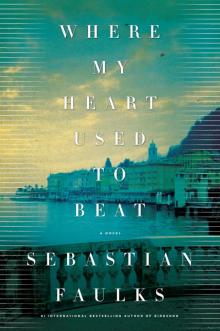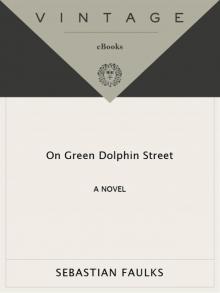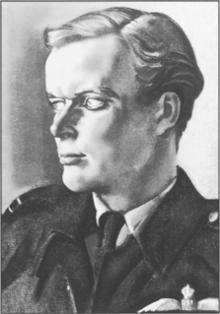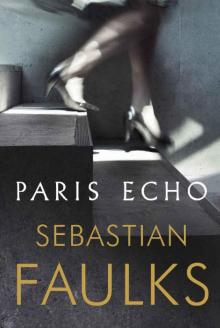- Home
- Sebastian Faulks
The Fatal Englishman: Three Short Lives Page 2
The Fatal Englishman: Three Short Lives Read online
Page 2
Alphonse Kahn’s house in the Avenue du Bois de Boulogne was dominated by a vast salon with a polished parquet floor and open fires at either end. About the walls were hung paintings by Turner, Rembrandt, Greuze, Poussin, Matisse and other modern painters that Wood could not immediately identify. Wood’s quarters consisted of a beautifully decorated bedroom, with bathroom and lavatory attached. Kahn provided him with meals and helped him to enrol at art school. Wood had wanted to go to the Ecole des Beaux Arts, but it was beyond his means; he signed up instead at the Académie Julian in the Passage des Panoramas off the Boulevard Montparnasse, which had been made fashionable in the 1890s when Bonnard, Vuillard and fellow-painters of the Nabis group had passed through. Matisse, Léger and Derain had added their lustre to the Académie, though by 1921 it had come to depend on visiting Americans.
All these names, all these styles of painting … and all that Christopher Wood had was his ambition. He needed not only to orientate himself in a foreign capital, but to catch up with what had happened there when he was a child. The principal breakthroughs in painting and sculpture had been made in Paris by Picasso and others before the War. Paris had drawn in artists from all over Europe: Modigliani, Miró, Brancusi, Picasso, Kandinsky, Giacometti, de Chirico, Chagall, but still in England the most famous painter was Augustus John.
Wood never managed to form a clear perspective on the development of modern painting; and his enthusiasms were often contradictory. He admired Augustus John, even though John’s work had already degenerated by this time into a succession of society portraits where his undoubted technical facility was not imaginatively stretched. But Wood also came to like Cézanne, Derain, Matisse and other French painters who were more determinedly modern. He compensated for his lack of academic understanding by an instinctive good taste, and a sensitivity to a wide variety of art.
As soon as he was settled at Alphonse Kahn’s, Wood did what all well-brought up young Englishmen would have done at this time: he wrote to his mother. Almost every day a letter was despatched from Paris in his hasty, sophisticated hand, its content a rush and slither of names, places, bad spelling and half-understood developments. He negotiated an allowance from his parents of £14 a month and was grateful to them for giving him ‘this chance’.
In matters of the world, in questions of politics and power, he remained vividly ignorant. In May he noticed cars on the streets of Paris being inspected by military authorities and believed this to be a preparation for war; but why, and against whom he did not know. Nor did he care. Compared to Huyton, Paris was entrancing. With Kahn’s help he acquired a studio in the rue des Saints Peres, a street that runs at right angles from the left bank of the Seine. His landlord was an Englishman called Middleton, who helped Wood set himself up in reasonable comfort. He painted all morning, and in the afternoon would go to the Académie Julian, where they taught a traditional course of figure drawing. Wood’s steady sketches showed a fair grasp of anatomy and perspective. They were not remarkable, but were not intended to be: his aching ambition reluctantly recognised the need for humility and apprenticeship.
In the evenings he left his student life and moved into a different world. Through Alphonse Kahn he met a number of fashionable, rich and self-indulgent people. Paris was both snobbish and democratic in its social life; gatherings might be ostentatious or competitive in their displays of spending, but the guest lists included people whose only wealth was their talent. In June Wood danced with Mme Carpentier, who was anxious about her husband George’s next title fight; he watched Suzanne Lenglen play tennis at St Cloud and met Maurice Chevalier; there was an invitation from a young Clemenceau, nephew of the Tiger. Wood was open-mouthed at the beauty of such people’s houses and the sophistication of their manners, but he tried to keep a level head. In his sober moments he recognised that it was useful for him to know people with money: they might make further and yet more useful introductions; they might one day buy his paintings.
He spoke little French and was not yet a proper painter. Alphonse Kahn had slipped him through the doorways of various large houses, and Wood’s charm had taken him from there. He was laughably English with his hand-made shirts, his fair hair, his earnest manner; yet he was also eager, reckless, open to experience and, with his limp and his little stick to lean on, poignantly vulnerable.
Through Kahn Wood met a Chilean diplomat called Antonio de Gandarillas, a notorious figure in the beau monde. Augustus John had stayed with Gandarillas and even John, the definition of outlandish bohemianism in English terms, had been taken aback by what he called Gandarillas’s ‘lurid and fashionable life’. Gandarillas was a man of huge financial resources but erratic solvency who claimed to be related to Catherine of Aragón. He was foremost among many South American émigrés in Paris who had used their wealth to patronise insolvent artists before the War. His aunt, Eugenia Errazuriz, had supported Picasso in his early days and consequently retained a direct influence with him.
Gandarillas himself was a small, exquisite man, who looked like a spider monkey. He was exhaustingly, indefatigably social: after parties, he loved food, drink, opium, gambling, travel, art and young men. He had been educated at Cambridge and was, when Wood met him, married with three daughters. Gandarillas’s life was not, however, consistent with orthodox marriage, and he saw little of his family. A family portrait done by Ambrose McEvoy in 1918 was reprinted in a book about McEvoy’s work in 1923 with Gandarillas painted out and the picture retitled ‘Madame Gandarillas and her children’. While he was unquestionably dangerous company for the impressionable Christopher Wood, Gandarillas had an important redeeming quality: he was capable of loyal friendship.
This was as well for Wood, because before long Gandarillas had more or less adopted him – as curio, protégé, and lover. The arrangement had an element of convenience for both men – Gandarillas gained a beautiful pet, Wood could eat – but it was underpinned by a constant affection.
Wood meanwhile continued with his studies. French girls, he complained, had large stomachs, but still on the whole, he drew women better than men. One of those he depicted was Maria, Duchesse de Gramont, a friend of Gandarillas’s who sat for some sketches. The Middletons lent him a bath for his studio, and since there was a bedroom there, he was able to make 54 rue des Saints Peres his official address, particularly in letters to his mother. In fact, when he moved out of Alphonse Kahn’s house he frequently spent the night at Gandarillas’s house in the Avenue Montaigne.
In July Wood was invited by a couple called Whitaker to go to their twelfth-century villa outside Florence. It was a handsome place, formerly the property of the Medicis, though the party stayed only a week or so before decamping to Riva on the shores of Lake Garda in search of cooler weather. Here he met and befriended the Russian painter Michael Sévier, who gave him his first set of oil paints. Apart from feeling uncomfortably hot, Wood registered the sensations of abroad in mainly visual terms. In late July he noticed some political unrest in Italy, but he had no interest in its causes. What he did record was a macabre incident in which two young men of about his age, who had been to dine with his party the night before, were kidnapped by terrorists and tied to the main railway line to Rome, where they lay for two hours before a train came through and cut them to pieces. The incident made a troubling impression on Wood: he never quite forgot it.
He arrived back in Paris in September. He had saved £35 in Italy, but had somehow managed to spend it on the way back and now found himself broke. He lodged briefly with a friend called Billie Shields and then with Adrien Drian, a portrait painter and decorative artist about whom he became enthusiastic: Drian was only thirty-five, but he was making, Wood could not help noticing, £5,000 a year.
In the autumn Gandarillas came to his rescue. He financed a small flat at 11 bis rue Balzac, just opposite the Carlton on the Champs Elysées, and enrolled him in a second art school, La Grande Chaumière. Wood rededicated himself to his work and was commissioned to paint some posters for the d
ress designer Edward Molyneux. This was a social commission, since Molyneux was one of the people he had met in the autumn season of parties, but it was the first time someone had shown any faith in his ability.
Wood was caught in a number of conflicting currents. Some evenings he would be in the company of such dubious figures as Lady Drogheda, Countess Lasocki, Princess Radziwill or Lady Idina Gordon who, though better educated, were not essentially different from what later generations came to know as ‘Eurotrash’; on other nights he would be alone in his little apartment. He was still only twenty, and he found that Paris could be a harsh and unfriendly place. His dedication to his work provided a daily, albeit fitful, continuity.
At the end of 1921 Wood returned for Christmas to Huyton, which he detested. His parents wanted to know what his ‘plans’ were and he told them that they had not changed: he wanted to be a great painter. He had no practical details to offer them, so escaped from the stifling atmosphere of the suburbs as soon as he could and took the train to London. Gandarillas was staying at his house in Cheyne Walk and was happy to put Wood up for a few days. He introduced him to Augustus John, and Wood was thrilled. Whatever the limits of John’s painting, he was still a heroic figure to aspiring English painters. Wood’s enthusiastic account of the meeting, incidentally, suggests that he had not previously met John at the Café Royal or anywhere else.
Wood also met Ivor Novello, Lady Diana Manners, Gladys Cooper and and a Chilean painter called Alvaro Guevara who took a strong physical liking to him which he managed to choke off only out of respect for Gandarillas. Wood did little work. He sulked in his bedroom overlooking the Thames. What was annoying him particularly was his mother’s suggestion that he take a job designing dresses for Edward Molyneux: this was not the kind of thing great painters did. Back in Paris he wrote to her extremely fiercely to point this out. He asked for her trust and promised that one day he would repay it; Clare Wood, who could deny him nothing, wrote back a conciliatory letter and the matter of Kit’s ‘future’ was temporarily put on one side.
In January Gandarillas took him travelling to the Low Countries, where Wood had a chance to see paintings by Rembrandt and Vermeer. He was struck by the devotion of the people at prayer at Bruges and vowed that one day he would paint exactly what he had seen. His mother was anxious that he might be drifting away from the Church of England, but she need not have worried: it was the aesthetic not the spiritual aspect of Catholicism that had caught his eye.
When he was back at the studio in the rue des Saints Peres and once more attending his courses at the Académie Julian, Wood reflected on his first year in Paris and admitted to his mother that it had been very hard. He had, he told her, come close to suicide.
‘I have felt lonely, terribly lonely,’ he wrote. He had ‘felt the lack of my Mother and home and sometimes had to do on very insufficient money … Paris to a young boy who knows nothing can be hell.’ He was not in Paris for the rest of the year. Gandarillas took him to Menton in the South of France and thence on a long trip round the Mediterranean. Much of it was financed by Gandarillas’s luck at the casino in Menton; the journey was unplanned, but gathered shape as it progressed. For Wood, as always, its purpose lay in self-education. In April they were in Tunisia and he painted a watercolour of a Moorish street which showed the early signs of a distinctive talent. It was in his use of colour that Wood first began to progress: he had clearly looked at the early paintings of Picasso, as well as those of Matisse and Derain, and learned a certain boldness.
Wood’s twenty-first birthday arrived on 7 April 1922. Events had moved so quickly that he needed to pause and take stock of his position. His ambition to be a great painter was intact; the longer he worked at his painting, however, the more he understood how far he had to go. On the one hand he had to cherish his ambition, he had to keep it burning and not allow the pleasures of his new life to extinguish it; then again, he was forced to recognise that he did not yet have the technical means to convert his ability into pictures. He had simultaneously to feed his ambition and to keep it dormant;
One of the ways in which he managed to keep this awkward balance was by enlisting his mother. His great painting, when it came, was to be in honour of her. ‘Some day,’ he wrote, ‘I hope to repay you for all your great love and kindness and the great care you took of me when I was ill. I never forget.’
Wood, who was a quite guileless correspondent, expressed with dramatic simplicity the equation that was at the centre of his creative process. His love for his mother and his gratitude towards her were genuine enough; but by equating his projected success as a painter with the ‘repaying’ and honouring of her, he cleverly insured his artistic ambition against failure or decrease. His love and gratitude would never fade; and now his will to paint was equally eternal. He did not make this connection from some cold-hearted calculation, but he possessed at an unconscious level the ruthlessness that art requires.
From Tunisia, Wood and Gandarillas travelled to Taormina in Sicily, then at the height of its unspoilt fame as a resort of astounding beauty, accessible, physically and financially, only to the few. Each day Wood rose early and left the villa they had rented to go down to swim in the pink shadow of Mount Etna. The return climb of 800 feet gave him an appetite for breakfast of eggs, coffee and cherries in the garden. Gandarillas would now have risen to plan the day’s enjoyment and would take coffee with him beneath the trees. In the morning Wood painted and Gandarillas read. After lunch there was a siesta, then more painting till the daily Italian lesson at five-thirty. In the cool of the evening Wood wrote to his mother. Then there was dinner laid on a little white table beneath some cypress trees on a terrace surrounded by Roman mosaics. Dinner was always an event: one day Wood was awoken by the main course when Gandarillas put two live lobsters in his bed during his siesta. Afterwards they sometimes had the town orchestra in to play for them and sometimes they read French. It was a time of almost unimaginable douceur de vivre, yet it was in Taormina, Mrs Wood later claimed, that Kit really began to paint. While his travels with Gandarillas took him away from his studies they also introduced him to sights, colours and scenery that were beyond the range of other students. In Taormina he painted a plate of lemons directly from above, as though he might see right through them into the plate. The perspective was actually less interesting than the brilliant yellow he achieved in the fruit.
In Taormina Wood read the letters of Van Gogh, and they left a deep impression. He had seen Van Gogh’s work on the walls of Alphonse Kahn’s house and greatly liked it; now he discovered that the work was produced by someone he described as having ‘a beautiful mind’. He began to believe that the nature of an artist’s work was determined by his moral character; and this assumption, however doubtful, fitted into his previous equation of his own success with the honouring of his mother.
While Wood placed a kind of superstitious value on his mother’s affection he was happy to disregard his father altogether. He had rejected the values of Huyton and all the dullness it entailed; he came increasingly to equate his father with the forces of tedium and small-mindedness that he must escape at all costs. This was a selective view of his father, just as the elevation of his mother was unrealistic, and ignored the fact that it was his father who was paying the £14 a month. Wood, however, was not searching for a mature or a consistent system of values: he was trying to be an important painter. He believed whatever helped.
From Sicily he and Gandarillas travelled to Athens, where they hired a car and driver to take them into the mountains. This proved to be a more hazardous undertaking than they expected. The roads were not properly made, and the young driver struggled to control the car. About 50 miles north of Athens he missed a narrow bridge and plunged them into a marsh beside the road. Nobody was hurt, but they were stuck 30 miles from the nearest village. Wood and Gandarillas stayed by the car to guard their belongings while the driver set off for help.
As they were sitting by the bridge, a young Greek soldie
r came by. He was on his way home from the war against Turkey – what war or why it was fought, Christopher Wood neither asked nor cared. The soldier stayed to help them, and when the driver returned with some horses they were able to pull the car free and continue their journey. The next day, on a mule track, they came across a dozen eagles devouring a dead horse; one of the birds removed an entire haunch and flew off with it. The eagles were unperturbed by the sound of the car, and Wood had to fire a revolver to frighten them away. He did not explain how or why he came to have a gun with him. They proceeded by pony and spent the night in a hut belonging to a goatherd, where they dined off chicken, goat’s cheese, figs and wine. They were so badly bitten by mosquitoes in the course of the night that they dosed themselves with quinine against malaria the next morning. At this stage, Gandarillas began to feel the want of fine linen, chateau-bottled wine and other necessities of life in the seiziéme. The expedition was cut short: they returned to Athens and took a boat to Constantinople.
Christopher Wood was everything Gandarillas wanted in a travelling companion: bright, appreciative, light-hearted, but sufficiently absorbed by his work to be independent for large parts of the day. In Constantinople he produced some accomplished watercolours and marvelled at the city itself. More trouble, however, was waiting for them in Smyrna.
If Wood and Gandarillas had taken greater interest in public events, or even if they had bothered to find out something from the soldier who had helped them in Greece, they might never have gone south to Smyrna in the first place. Under the treaty of Sevres in 1920 Greece had been given Smyrna, and by 1922 the Greek army was trying to push its way up the Aegean coast. The Turks, however, had found a leader in Mustafa Kemal (Kemal Atatürk) with no regard for treaties and a committed hatred of the Greeks. He drove their army back into Smyrna, and then did what any Turkish leader would have done: massacred them.

 Devil May Care
Devil May Care Pistache Returns
Pistache Returns The Girl at the Lion D'Or
The Girl at the Lion D'Or Pistache
Pistache Jeeves and the Wedding Bells
Jeeves and the Wedding Bells A Week in December
A Week in December The Vintage Book of War Stories
The Vintage Book of War Stories Engleby
Engleby Birdsong
Birdsong Jack Firebrace's War
Jack Firebrace's War Where My Heart Used to Beat
Where My Heart Used to Beat A Possible Life
A Possible Life The Fatal Englishman: Three Short Lives
The Fatal Englishman: Three Short Lives On Green Dolphin Street
On Green Dolphin Street Charlotte Gray
Charlotte Gray A Broken World: Letters, Diaries and Memories of the Great War
A Broken World: Letters, Diaries and Memories of the Great War Human Traces
Human Traces The Fatal Englishman
The Fatal Englishman A Broken World
A Broken World Paris Echo
Paris Echo War Stories
War Stories Girl At the Lion d'Or
Girl At the Lion d'Or